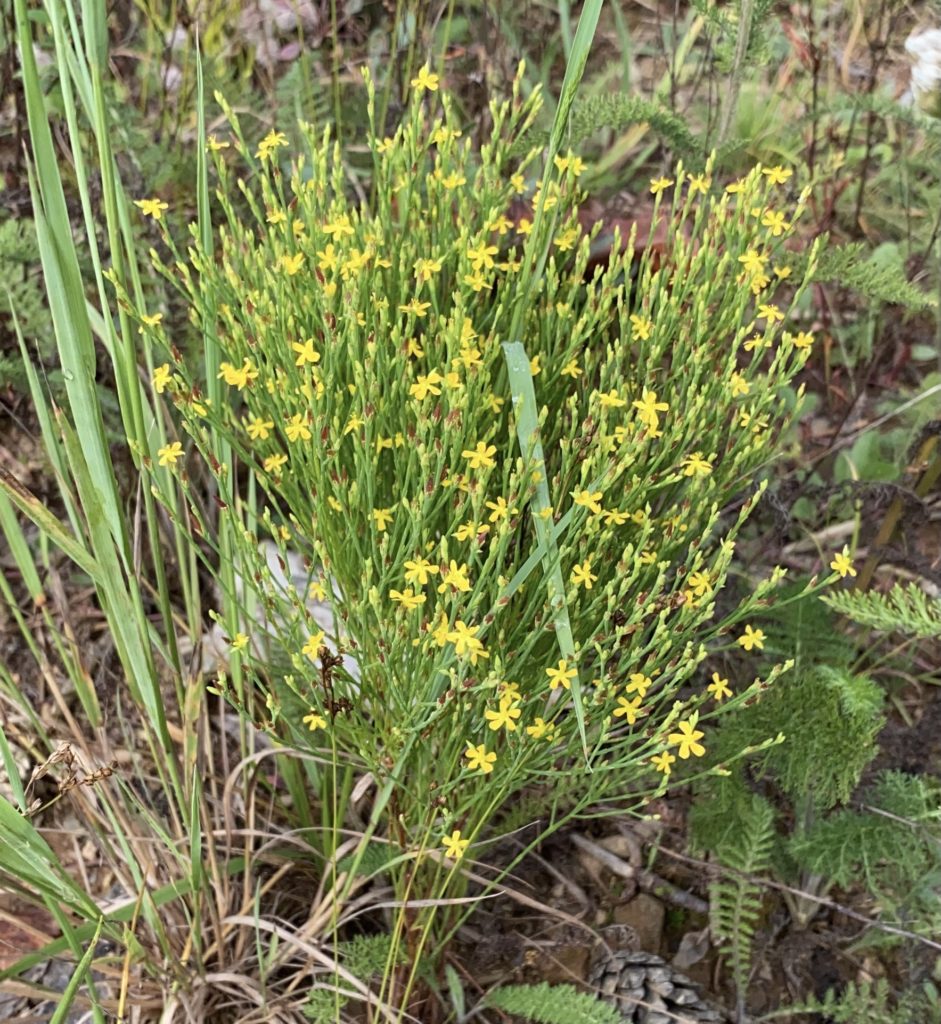
What’s In Bloom | Orange-grass St. John’s Wort
- Orange-grass St. John’s Wort (Hypericum gentianoides) is an herbaceous annual species native to eastern North America.
- 6-10” tall with an upright, wiry appearance due to tiny, appressed leaves.
- Prefers sandy or rocky areas, and requires disturbance to survive.
- Common name orange-grass was inspired by the citrus smell occurring when leaves are crushed.
Orange-grass St. John’s Wort (Hypericum gentianoides), also known as pineweed or gentian-leaved St. John’s Wort, is an herbaceous annual species native to eastern North America. Generally around 6-10” tall, it has an upright, wiry appearance due to its tiny, sessile (lacking a stalk or peduncle) and appressed (parallel with the stem) leaves. Leaves are scale-like, opposite, and up to 3mm long. Between July-September, 3-5mm wide yellow flowers bloom from the upper leaf axils. Each has 5 separate petals, 3 styles, and less than 100 stamens, and becomes a tiny, fiery-red seed capsule. Once dropped, seeds either grow the following year, or remain in the seed bank during years with unfavorable conditions.

Orange-grass can be found in sandy areas such as dunes, open woods, fields, roadsides, and rocky outcroppings, and less often in marshy areas, including coastal plain marshes and intermittent wetlands. As an early successional species, it requires disturbance for germination, spread and persistence. While water-table fluctuations and wildfires are examples of natural disturbances, much of its habitat today is created by artificial, man-made disturbances. Since the vast majority of such places are not managed with conservation in mind, more field surveys are required to determine known occurrences and identify priority conservation areas, and ensure the prolonged future of this species. It is currently not of concern in Virginia, but is listed as imperiled and vulnerable in some northeastern states.
The common names of orange-grass St. John’s Wort result from the plant’s unique features. The nickname pineweed emerged from its distinctly pine-needle-like appearance, while it was dubbed orange-grass in recognition of the peculiarly orangey fragrance it produces when its leaves or stems are broken.
Benefits to biodiversity | Orange-grass St. John’s Wort is a member of the genus Hypericum, which is known to host 23 species of butterflies and moths. They attract various native bees, including polyester, yellow-face, large carpenter, bumble, leafcutter, resin, and sweat bees.
Sources:
https://mnfi.anr.msu.edu/abstracts/botany/Hypericum_gentianoides.pdf
http://floranorthamerica.org/Hypericum_gentianoides
https://www.wildflower.org/plants/result.php?id_plant=HYGE